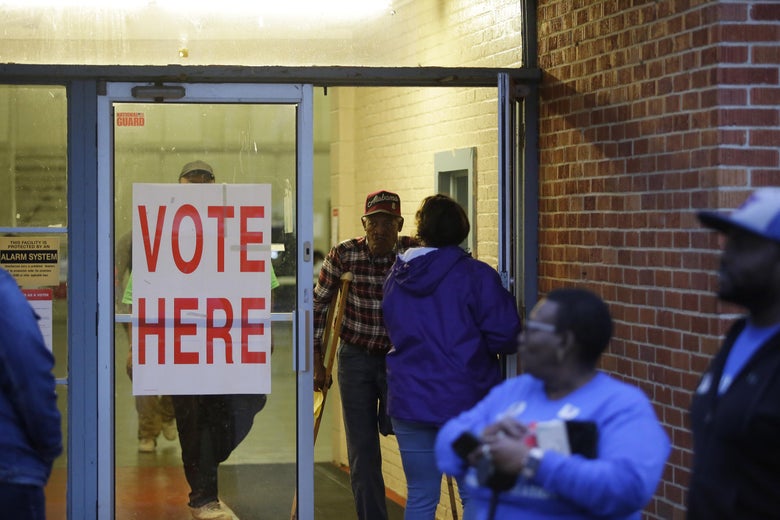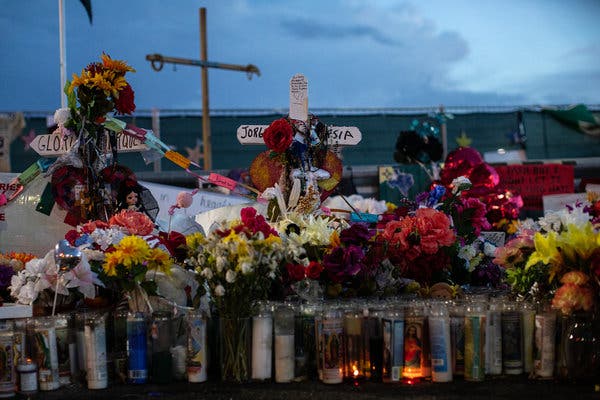Advertisement

WASHINGTON — The House voted Thursday to raise the federal minimum wage to $15 an hour by 2025, delivering a long-sought victory to liberals and putting the Democratic Party’s official imprimatur on the so-called Fight for $15, which many Democratic presidential candidates have embraced.
The bill would more than double the federal minimum wage, which is $7.25 an hour — about $15,000 a year for someone working 40 hours a week, or about $10,000 less than the federal poverty level for a family of four. It has not been raised since 2009, the longest time the country has gone without a minimum-wage increase since it was established 1938.
The measure, which passed largely along party lines, 231-199, after Republicans branded it a jobs-killer, faces a blockade in the Senate, where Senator Mitch McConnell of Kentucky, the majority leader, said he will not take it up. Only three Republicans voted for it, while six Democrats opposed it. Most represent swing districts.
But it previews what Democrats would do if they capture the Senate and the White House in 2020, and it demonstrates how fast the politics have shifted since 2012, when fast-food workers began to strike in cities around the country, demanding $15-an-hour wages and a union.
When the Fight for $15 movement was launched, the figure seemed absurdly high, and even Democrats thought it was politically impossible. In the years since, even Republican states like Arkansas and Missouri have raised minimum wages, encouraging Democrats on Capitol Hill. In 2016, Senator Bernie Sanders, independent of Vermont, pushed the issue to the fore when he challenged Hillary Clinton for the Democratic presidential nomination.
“This is an historic day,” declared Speaker Nancy Pelosi, who argued that raising the minimum would disproportionately help women, who make up more than half of minimum wage workers, and would particularly help women of color. Turning to Republicans, she said: “No one can live with dignity on a $7.25-per-hour minimum wage. Can you?”
As the measure passed, the House gallery, filled with restaurant workers, erupted into cheers and chants of “We work! We sweat! We want 15 on our check!”
“It’s got overwhelming support within the Democratic Caucus, and I think the fact that it could pass in Arkansas gives pause to anybody that’s thinking about voting against it,” said Representative Robert C. Scott, Democrat of Virginia and the measure’s chief sponsor.
Still, Democratic moderates — especially those who represent districts carried by President Trump — were nervous about the measure, and it took champions of the bill months to bring them around. In the end, the sponsors tacked on two provisions: one authorizing a study of the measure’s effects after it has been in place for two years, and another extending the deadline for a $15 minimum wage from 2024 to 2025.
Representative Alexandria Ocasio-Cortez, the liberal Democrat from New York and a strong ally of the Fight for $15 movement, called the vote a “huge deal.” But she signaled the fight is not over.
“It’s not just about $15, it’s about $15 and a union,” she said. “Fifteen started 10 years ago, so what is that pegged to inflation today? That’s why what we fight for is a living wage. So I think that this vote is an important milestone.”
The federal government sets the floor for the minimum wage; states can enact higher minimums. Raising the minimum wage to $15 by 2025 will pull 1.3 million American out of poverty and could result in wage increases for up to 27 million workers, according to a recent Congressional Budget Office analysis.
But it would leave 1.3 million people, or 0.8 percent of the work force, out of a job, the same study concluded. While the legislation would boost incomes at the bottom, it would cost richer households and would slightly reduce gross domestic product.
Republicans focused on the C.B.O.’s job loss figure, as well as regional disparities in the cost of living. They invoked their favorite epithet for the Democrats of the new House — “socialist” — in arguing against the measure.

“Let’s leave freedom in the hands of the people, in the hands of the states — that’s what this country is all about,” said Representative Virginia Foxx, Republican of North Carolina, who managed the bill for Republicans on the House floor. “In socialist regimes, all decision are made by a small group of people at a central government. That is not the American way.”
Economists have increasingly accepted that some level of minimum wage increase can work — coming at a minimal cost to jobs — in some jurisdictions, said David Neumark, an economist at the University of California at Irvine who has studied minimum wages extensively. But a one-size-fits-all policy that more than doubles some businesses’ wage bills could hit employers in lower-pay areas hard, he said.
“It has had what I would say was a remarkable and unexpected political success,” Mr. Neumark said of the $15 minimum. “Does it make sense? Call me skeptical.”
But some advocates of a higher minimum wage want to push pay up even farther. Among them is Heidi Shierholz, an economist at the union-funded Economic Policy Institute, who said even $15 will not be adequate if workers have to wait until 2021, when a Democrat could again occupy the White House.
“The Fight for $15 was launched in 2012, and every year that passes, the purchasing power of $15 goes down,” she said.
Ms. Pelosi had promised a vote on the wage bill soon after Democrats took power in January, but party leaders soon found that was going to be impossible; too many moderates were uneasy with it. Along with Representative Robert C. Scott, Democrat of Virginia and the bill’s chief sponsor, Ms. Pelosi deputized Representative Stephanie Murphy, who represents a swing district in Florida, to build support for the bill.
“We’re unifying behind the idea that we need to help hardworking families make ends meet,” said Ms. Murphy, whose district includes many workers employed at Disney World, which recently agreed to raise its minimum wage to $15 by 2021.
To fast-food workers like Terrence Wise, 40, who lives in Kansas City, Mo., and makes $12 an hour working full-time at McDonald’s, the vote shows the power of grass-roots activism.
“We’re a powerful voting bloc,” said Mr. Wise, a longtime leader of the Fight for $15 movement, “and we will take that power to the ballot box.”
The push for a $15 minimum wage began in New York City, when a group called New York Communities for Change started visiting fast-food restaurants and talking to workers about their grievances.
“Fast food workers always believed that there would be a national shift to $15,” said Mary Kay Henry, head of Service Employees International Union, which has helped provide institutional support to Fight for $15 from the outset. She recalled marching alongside them in 2012 and thinking that the goal was ambitious — because Democrats were talking about $9 and $10.10 minimums at the time. “I remember thinking, ‘Holy moly. How long is this going to take us?’”
Seven states have now passed legislation to gradually raise wages to $15, and cities including San Francisco and New York City already pay that much. In total, 29 states now have floors higher than the federal minimum, according to the Labor Department.
Companies have even joined in, with corporations including Amazon and Target raising their base wages to $15. By the 2016 midterm elections, $15 was resonating at a national level, making it into the Democratic Party platform. Support for striking workers has become common among Democratic presidential hopefuls including South Bend, Ind., Mayor Pete Buttigieg and Senator Cory Booker of New Jersey.
“The successes in the municipalities and states are key,” said Douglas Holtz-Eakin, a former director of the Congressional Budget Office who has advised Republican presidential candidates and is now president of the American Action Forum. “All of that laid down the predicate that people wanted this.”
But Mr. Holtz-Eakin said raising the national minimum wage would be a mistake, in part because labor conditions vary dramatically around the country. He said it is unlikely that the minimum wage will pass at $15 by 2025, even if a Democrat wins the White House in 2020.
“Politically, it’s a popular one, there’s no question,” he said. “I think it gets bargained down in the process.”
An earlier version of this article misquoted Terrence Wise, a McDonald’s employee in Kansas City, Mo. He said, “We’re a powerful voting bloc, and we will take that power to the ballot box,” not “We’re a powerful voting bloc and we will take that to the voting bloc.”
An earlier version of this article misstated the percentage of the work force that would be left out of work by raising the federal minimum wage to $15 an hour, according to a study by the Congressional Budget Office. It is 0.8 percent, not 0.08. An earlier version also misstated an organization with which the economist Heidi Shierholz is affiliated. It is the Economic Policy Institute, not the Employment Policy Institute.
Follow Sheryl Gay Stolberg and Jeanna Smialek on Twitter: @SherylNYT @JeannaSmialek
A version of this article appears in print on , Section B, Page 7 of the New York edition with the headline: House Backs a $15 Minimum Wage. Order Reprints | Today’s Paper | Subscribe

